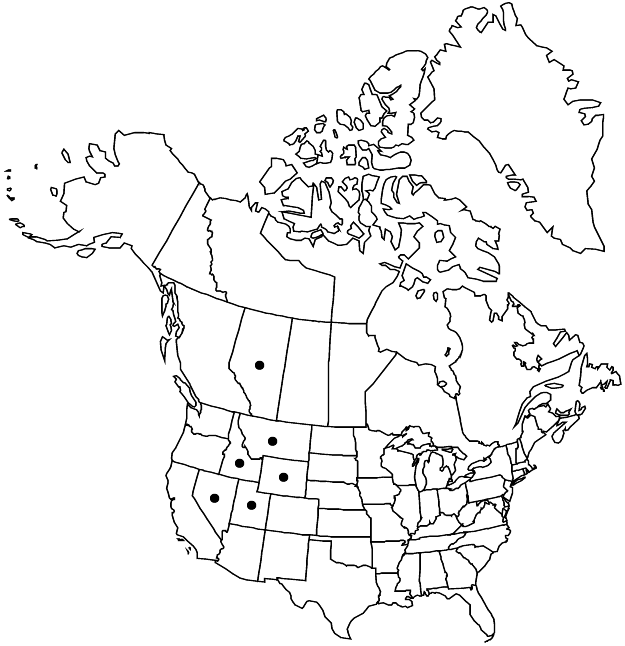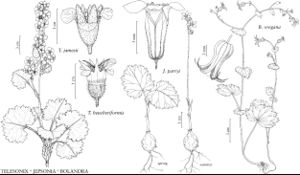Difference between revisions of "Telesonix heucheriformis"
in N. L. Britton et al., N. Amer. Fl. 22: 126. 1905,.
FNA>Volume Importer |
imported>Volume Importer |
||
| (4 intermediate revisions by 2 users not shown) | |||
| Line 1: | Line 1: | ||
{{Treatment/ID | {{Treatment/ID | ||
|accepted_name=Telesonix heucheriformis | |accepted_name=Telesonix heucheriformis | ||
| − | |accepted_authority=(Rydberg) Rydberg | + | |accepted_authority=(Rydberg) Rydberg |
|publications={{Treatment/Publication | |publications={{Treatment/Publication | ||
|title=in N. L. Britton et al., N. Amer. Fl. | |title=in N. L. Britton et al., N. Amer. Fl. | ||
|place=22: 126. 1905, | |place=22: 126. 1905, | ||
| + | }} | ||
| + | |special_status={{Treatment/ID/Special_status | ||
| + | |code=F | ||
| + | |label=Illustrated | ||
| + | }}{{Treatment/ID/Special_status | ||
| + | |code=E | ||
| + | |label=Endemic | ||
}} | }} | ||
|basionyms={{Treatment/ID/Basionym | |basionyms={{Treatment/ID/Basionym | ||
|name=Therofon heucheriforme | |name=Therofon heucheriforme | ||
|authority=Rydberg | |authority=Rydberg | ||
| + | |rank=species | ||
|publication_title=Bull. Torrey Bot. Club | |publication_title=Bull. Torrey Bot. Club | ||
|publication_place=24: 247. 1897 (as heucheraeforme) | |publication_place=24: 247. 1897 (as heucheraeforme) | ||
| Line 15: | Line 23: | ||
|name=Boykinia heucheriformis | |name=Boykinia heucheriformis | ||
|authority=(Rydberg) Rosendahl | |authority=(Rydberg) Rosendahl | ||
| + | |rank=species | ||
}} {{Treatment/ID/Synonym | }} {{Treatment/ID/Synonym | ||
|name=Boykinia jamesii var. heucheriformis | |name=Boykinia jamesii var. heucheriformis | ||
|authority=(Rydberg) Engler | |authority=(Rydberg) Engler | ||
| + | |rank=variety | ||
}} {{Treatment/ID/Synonym | }} {{Treatment/ID/Synonym | ||
|name=Saxifraga heucheriformis | |name=Saxifraga heucheriformis | ||
|authority=(Rydberg) M. E. Jones | |authority=(Rydberg) M. E. Jones | ||
| + | |rank=species | ||
}} {{Treatment/ID/Synonym | }} {{Treatment/ID/Synonym | ||
|name=Telesonix jamesii var. heucheriformis | |name=Telesonix jamesii var. heucheriformis | ||
|authority=(Rydberg) Bacigalupi | |authority=(Rydberg) Bacigalupi | ||
| + | |rank=variety | ||
}} | }} | ||
|hierarchy=Saxifragaceae;Telesonix;Telesonix heucheriformis | |hierarchy=Saxifragaceae;Telesonix;Telesonix heucheriformis | ||
| Line 48: | Line 60: | ||
-->{{#Taxon: | -->{{#Taxon: | ||
name=Telesonix heucheriformis | name=Telesonix heucheriformis | ||
| − | + | |authority=(Rydberg) Rydberg | |
| − | |authority=(Rydberg) Rydberg | ||
|rank=species | |rank=species | ||
|parent rank=genus | |parent rank=genus | ||
| Line 62: | Line 73: | ||
|publication title=in N. L. Britton et al., N. Amer. Fl. | |publication title=in N. L. Britton et al., N. Amer. Fl. | ||
|publication year= | |publication year= | ||
| − | |special status= | + | |special status=Illustrated;Endemic |
| − | |source xml=https:// | + | |source xml=https://bitbucket.org/aafc-mbb/fna-data-curation/src/2e0870ddd59836b60bcf96646a41e87ea5a5943a/coarse_grained_fna_xml/V8/V8_233.xml |
|genus=Telesonix | |genus=Telesonix | ||
|species=Telesonix heucheriformis | |species=Telesonix heucheriformis | ||
Latest revision as of 22:42, 5 November 2020
Flowering stems 30–230 cm. Leaves: stipules of cauline leaves 1–2 mm (often fimbriate, sometimes foliaceous); petiole (5–)10–50(–100) mm; blade 9–50 × 13–70 mm, succulent. Pedicels densely stipitate-glandular. Flowers: hypanthium free from ovary (1.5–)2–3.5 mm, campanulate to turbinate; sepals erect, lanceolate to ovate-lanceolate, 3–6 mm, apex usually acute; petals violet-purple, ovate or spatulate, 3–6(–6.8) × 1–3.5(–5) mm, lengths ca. 1.3 times sepals, base tapered to claw; stamens (1.9–)2.5–3.3(–3.8) mm; anthers obtuse; styles connate ca. 1/2 their lengths. Capsules ovoid. Seeds 50–100. 2n = 14.
Phenology: Flowering summer.
Habitat: Crevices of calcareous rock faces
Elevation: (1500-)2500-3500 m
Distribution

Alta., Idaho, Mont., Nev., Utah, Wyo.
Discussion
Plants of Telesonix heucheriformis from central and western Wyoming have petals approaching in size those of T. jamesii. Because of this, there is an argument for treating the two taxa as varieties of a single species; however, they are readily distinguishable throughout almost all of the range, have different edaphic preferences, slight differences in pollen morphology, and different flavonoid chemistries (R. J. Gornall and B. A. Bohm 1980). A report from South Dakota (P. A. Rydberg 1905c) is considered erroneous, given its age and the absence of any voucher specimens.
Selected References
None.
